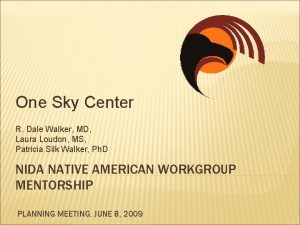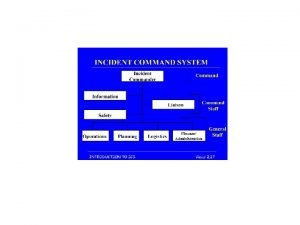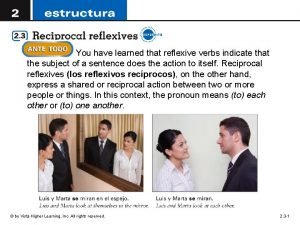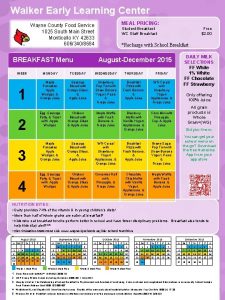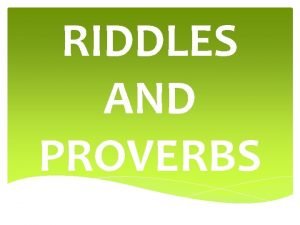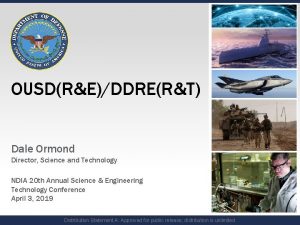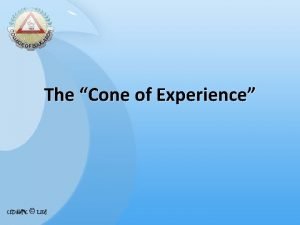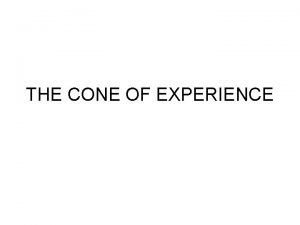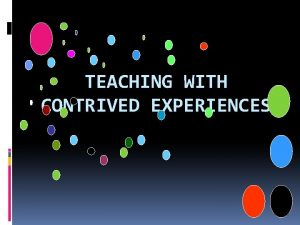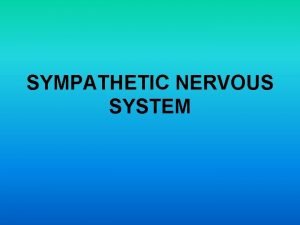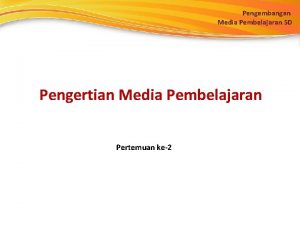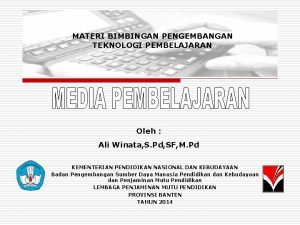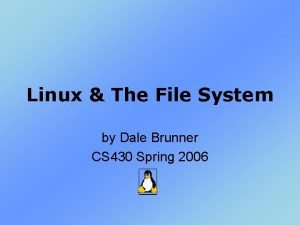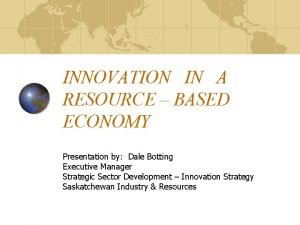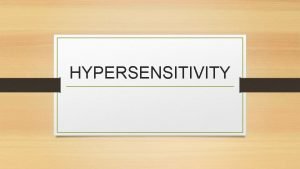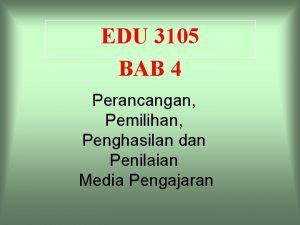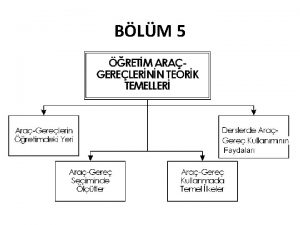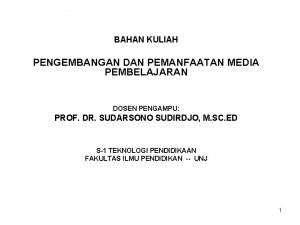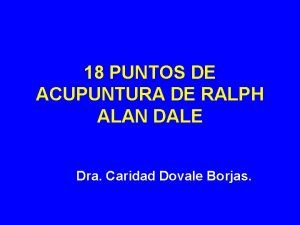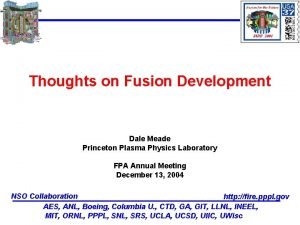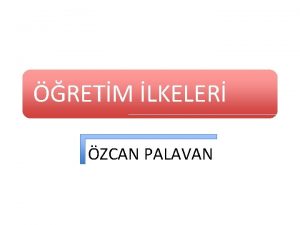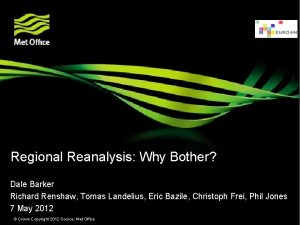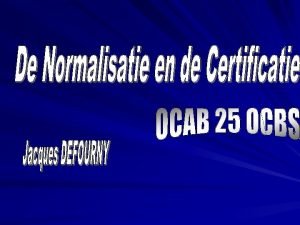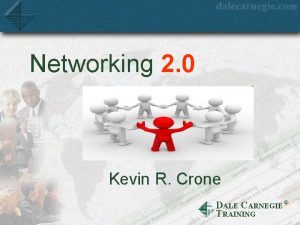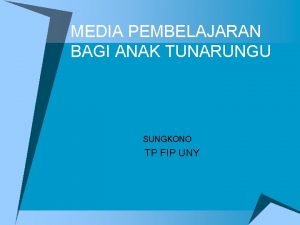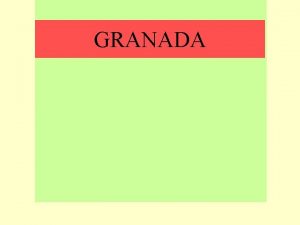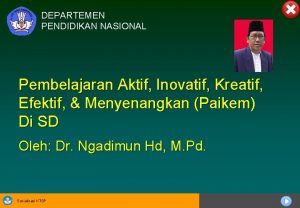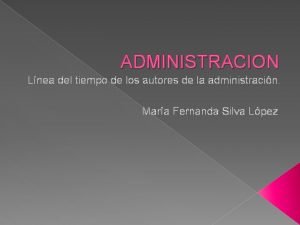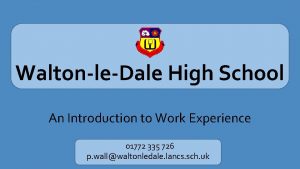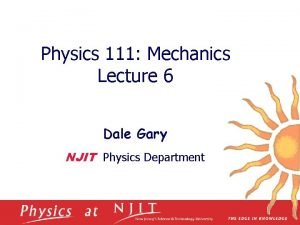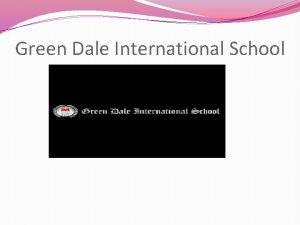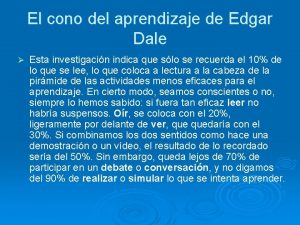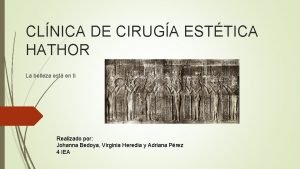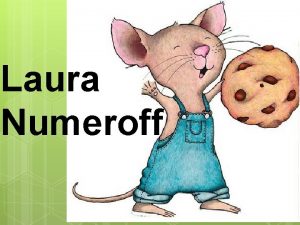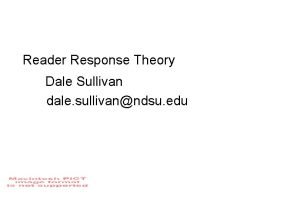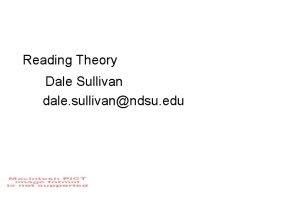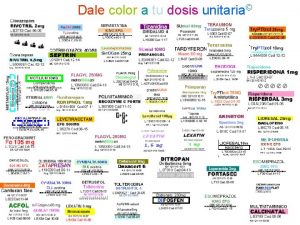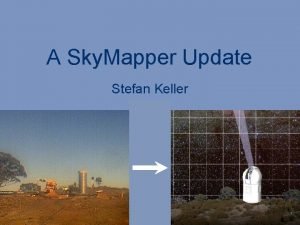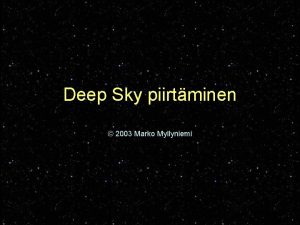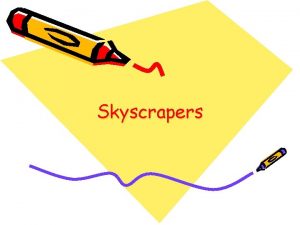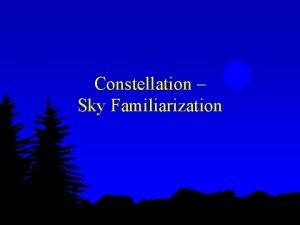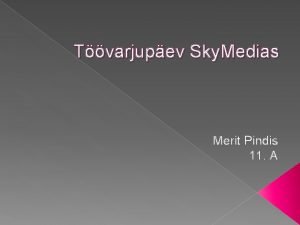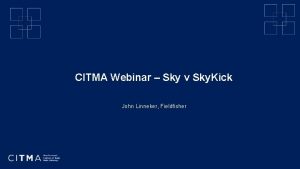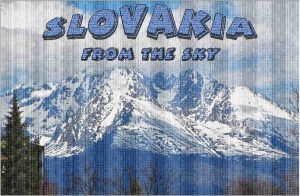One Sky Center R Dale Walker MD Laura






















































- Slides: 54

One Sky Center R. Dale Walker, MD, Laura Loudon, MS, Patricia Silk Walker, Ph. D NIDA NATIVE AMERICAN WORKGROUP MENTORSHIP PLANNING MEETING. JUNE 8, 2009

THE PROPOSAL AND STATEMENT OF WORK 2

WORKGROUP OBJECTIVES Education of public, students, health practitioners and researchers on addiction in the AI/AN/NH population as well as associated co-morbidities Enhancing research competency Developing research concepts Grant application process Mentoring Understand maintain Native community based research 3

NIDA GOALS Increase and retain underrepresented minority investigators (American Indian, Alaska Native and Native Hawaiian) conducting substance abuse and addition research Establish effective communication pathways for recruitment of new investigators or candidates for training positions at NIDA 4

PROJECT GOALS Mentoring and training twelve underrepresented minorities interested in substance abuse and addictions research Pair Mentees with Mentors and encourage training, site visits, and professional development Assist in identification and recruitment of candidates for NIDA training opportunities Establish a website at oneskycenter. org to identify Mentors, Mentees, faculty/student interests and projects, and NIDA agenda. 5

Faculty Responsibilities: Competing ISSUES Advising Community Involvement Advocacy Clinical Service Academic Travel Personal Time Family Mentoring? Tribal Spiritual Teaching Students Research Grant Proposals 6

MENTORSHIP IN INDIAN COUNTRY 7

American Indian and Alaska Native Research Training: The Colorado Experience in Aging Spero M. Manson, Ph. D American Indian and Alaska Native Programs University of Colorado Health Sciences Center “North to the Future in Aging Research” National Institute on Aging September 10, 2003 Anchorage, AK

Community Liaison Core Key Features u Community-based field offices u State-of-the-art telecommunications u Ongoing studies u Local advisory committees u Continuing education and training

Investigator Development Core Key Features u 2 year training period u 4 -5 Native Investigators each period u Targeted didactic instruction u Intensive mentoring u Interdisciplinary faculty

Investigator Development Core Investigator characteristics u MD, Ph. D-level social, behavioral and health scientist u Seven years or less post-graduate status u American Indian or Alaska Native u Commitment to a research career u Interest in health, aging, and culture


Investigator Development Core Training Components u “Introduction to Native Aging and Health” u Pilot Studies u Regular NERC/RCMAR meetings u Mentor interactions u Secondary analyses of relevant data sets

Investigator Development Core Relevant seminars and workshops AAMC “Minority Faculty Career Development Seminar” NIA “Summer Institute on Aging Research” u Manuscript review by Scientific Journal Editor u Mock Initial Review Group u

Investigator Development Core Secondary Analyses of Relevant Data Sets u Strong Heart Study u SIHB Primary Care Survey u AI-SUPERPFP u Behavioral Risk Factor Surveillance System

Investigator Development Core Cycle of Program Activities Secondary Data Analysis Pilot Study Manuscripts & Grant Preparation Program Months 01 02 03 04 05 06 07 08 09 10 11 12 13 14 15 16 17 18 19 20 21 22 23 24 MC NMNMNM NM NM AP AP AP MC = Minicourse NM = NERC Meeting AP = Advisory Panel Meeting

Investigator Development Core Pilot Study: D. Rhoades, MD, MPH Cardiovascular Risk Reduction Among Urban Native Elders u Purpose: develop, deliver, and evaluate relative effects of dietary and exercise interventions in reducing CVD risk factors among urban Native elders

Investigator Development Core Pilot Study: J. Henderson, MD, MPH Polypharmacy Among Lakota Elders u Purpose: describe nature, extent, and consequences of polypharmacy among Lakota elders; design and evaluate multi-arm intervention to reduce drug misuse and potentially harmful outcomes

Investigator Development Core Pilot Study: Y. Roubideaux, MD, MPH Diabetic Care Among Older Native Americans: Quality and Outcomes u Purpose: identify patient-, providerand systems-oriented factors that facilitate as well as impede effective diabetic care among urban Native elders

Keys to Success

Keys to Success History of high quality, broad-based, relevant research u Stable, active research program u Strong institutional support and involvement u Critical mass of experienced investigators from a wide range of disciplines u

Keys to Success u Indian and Native scientists as role models NIH R 01 -funded well-published experienced in mentoring connected to, familiar with potential sponsors in clear positions of leadership

Keys to Success Promote self-reflection, perspectivetaking, and constructive criticism u Ensure adequate scientific preparation in concrete, personally relevant terms u Emphasize writing skills and maximize learning opportunities u

Keys to Success Provide clarity and extensive structure regarding expectations linked to short- and long-term goals u Stress deadlines, accountability, and inter-locked nature of effort u Underscore efficiencies and time management u Maximize group collaboration and co -teaching as well as co-learning u

Keys to Success Demystify grantsmanship process and teach to compete successfully u Help to restructure threatening or discouraging circumstances as challenges and opportunities u Recognize, address tensions among personal, professional, and social goals u

Keys to Success Prepare for realities of communitybased partnerships u Offer strategies for outreach and dissemination of findings u Communicate value of collaborating with other institutions u Encourage advocacy through translation of findings into policy u


RESEARCH METHODS (TAILORED TO NEEDS) Selection of research questions Research design Research ethics Dealing with Institutional Review Board requirements Data collection using diagnostic instruments Principles of quantitative and qualitative data analysis Links between research findings and policy making Yager et al Academic Psychiatry 2007 28

RESEARCH METHODS (TAILORED TO NEEDS) CONTINUED Pertinent statistical techniques Clinical epidemiology in mental health research Collaborative methods in community-based participatory research Multi-method research including pertinent ethnographic techniques Experimental and quasi-experimental methods Yager et al Academic Psychiatry 2007 29

GRANT APPLICATIONS AND MANAGEMENT Writing proposals Funding concerns in career development Mock NIMH review group sessions Realities of getting proposals funded; networking, informal communication, and shepherding through internal and external review committees Yager et al Academic Psychiatry 2007 30

GRANT APPLICATIONS AND MANAGEMENT CONTINUED Budgeting time, effort, and funds; negotiating for protected time and resources for research; selecting and managing a research team Statistical analysis Choosing and working with consultants Balancing research with other professional and personal activities Yager et al Academic Psychiatry 2007 31

THE MENTORSHIP PLAN 32

REASONS TO DEVELOP A MENTORING RELATIONSHIP Provide instruction on conducting research responsibly Improve trainee's self-confidence Critique and support trainee's research Define clear research focus Assist in defining and achieving career goals Socialize trainee into the profession Assist in development of extensive collegial networks Advise how to balance work and personal life Teach more efficient use of resources 33

REASONS TO DEVELOP A NATIVE MENTORING RELATIONSHIP Provide instruction on conducting research responsibly Improve trainee's self-confidence Critique and support trainee's research Define clear research focus Assist in defining and achieving career goals Socialize trainee into the profession Assist in development of extensive collegial networks Advise how to balance work and personal life Teach more efficient use of resources 34

MENTOR AND TRAINEE RESPONSIBILITIES ISSUES Need for Mentoring Expectations, Goals, Objectives Establishing the Relationship Working Together Identifying Challenges Lessons Learned Transition to Independent Researcher 35

STUDENT DEVELOPMENT THEORY (FOUNDATION /OLD PARADIGM) Ø Ø Ø Arthur Chickering and Marcia Baxter Magolda are two of the dominant student development theorists that seek to explain the evolution of students in higher education. Although Chickering’s and Baxter Magolda’s theories are well founded, yet more research must focus on the needs and desires of students of color/culture. The new paradigm in student development theory must shift to include class and culturally contextual and relevant material. Committee for Multicultural Affairs, Native American Network, 2002 36

STUDENT DEVELOPMENT THEORETICAL FOUNDATION FOR CULTURAL MODELS (PART 1) Chickering’s 7 Vectors: Ø Developing competence Ø Managing emotions Ø Developing autonomy Ø Establishing identity Ø Freeing interpersonal relationships Ø Developing purpose Ø Developing integrity Baxter Magolda 4 areas focuses on cognitive and meta-cognitive development. Ø Absolute knowledge Ø Transitional knowledge Ø Independent knowledge Ø Contextual knowledge 37

Acculturation and Identity, An American Indian Model: Sandra Choney: Acculturation: The degree to which student accepts and adheres to both mainstream and cultural values. “Walking in both Worlds. ” • Model focuses on American Indian development. • Students of color/culture all go through a process of defining their identity. • Part of this identity search is to come to terms with their cultural norms and also to synthesize their values into the dominant society. • 1=Traditional, 2=Transitional, 3=Bicultural, 4=Assimilated, 5=Marginal

Native Student Development Paradigm One new paradigm in Student Development Theory includes class and culturally contextual relevant material. Theories solely based on the mainstream paradigm are not adequate to help engage students with distinct culture, class, and ethnicity. To succeed, one must know about themselves and their true history. Students must be empowered with pride and self-worth.

Current Trends… • More than one half Native Americans entering as college freshman will leave after their first year. • Native American retention rate is 15% below the national average. • For every 100 Native students entering ninth grade, 60 will finish high school. • About 20 will enter college and only 3 will graduate with a four-year degree Source: National Institute for Native Leadership in Higher Education, 2002

Why Is There a Need For the Shift? • Low enrollment rate and high attrition rate • Feeling of alienation/isolation on campus • Institutionalization of Western philosophies and values • Native communities are not included in decision making • Cultural oppression • Tribal differences not being considered or validated • Lack of Native American faculty and staff • Lack of culturally relevant support and developmental services. • Lack of awareness about the needs of Native students. • Lack of collaboration between college and tribal institutions. • Lack of financial resources

Best Practices First Nation’s and Higher Education: The 4 R’s— Respect, Relevance, Reciprocity, & Responsibility. ØRespect For Who (Indigenous Students) They Are…. ØRelevance to Their (Indigenous Students) World View…. ØReciprocity Between the Institution, other students and Indigenous Students… ØResponsibility in Their (Indigenous Students)Own Lives

MENTORSHIP SPECIFICS 43

EXPECTATIONS, GOALS, AND OBJECTIVES Trainee self-assessment Mentor self-assessment Trainee goals and objectives Trainee activities Mentor goals and objectives Mentor activities 44

TRAINEE SELF-ASSESSMENT What are my research ambitions? What are my current research skills and knowledge? What are some possible research interests I have? What support do I need to pursue those research interests responsibly? What is the timetable to completing my education/training? 45

MENTOR SELF-ASSESSMENT Which potential trainee has research interest similar to mine? Which potential trainee pursuing research in my areas of interest needs help? How best can I prepare a trainee to assume my research responsibilities in the long run? 46

TRAINEE GOALS AND OBJECTIVES participate in activities to adjust to a research environment identify and adopt discipline-specific research values identify multiple institutional resources identify procedures for submitting research for IRB/peer review successfully manage a research agenda develop research survival skills set research priorities and develop professional profile identify strategies to avoid pitfalls in conducting research identify institutional policies and procedures related to conducting research identify the code of responsible research conduct specific to field of study 47 Maintain identity as Native

MENTOR GOALS AND OBJECTIVES Provide professional guidance Provide leadership role model Share research relevant knowledge and experience Identify and resolve potential obstacles Guide trainee in conducting research responsibly Assist trainee to develop professional networks Enhance trainees' research and publication efforts Demonstrate/model how to develop greater initiative, increased independence, and self-reliance 48

THE 5 ELEMENTS OF MENTORING PROGRAM Recruit: Define eligibility, market program, conduct information sessions Screen: applications, reference checks, interviews, orientation Train: Overview of the program, role clarification, situational “how-to’s” Match: Establish criteria, ensure all parties understand agree to the terms and conditions of participation Monitor: Continuing training opportunities, regular communication, goal setting and achievement, conflict resolution, documentation 49

MENTORING LOGIC MODEL Do These… Program Best Practices Monitor These…. Strong Emotional Bonds Frequent Durable Relationships s Measure These… Positive Effects Active Mentoring Relationships Youth Build Program 2008 50

MENTEE EXPECTATIONS OF PROGRAM: Guidance and advice 38% Networking 18% Research, Grant writing, collaborations 11% MENTOR EXPECTATIONS OF PROGRAM: To help/ share with younger faculty (23%) Satisfaction with helping younger faculty (14%) Networking (9%) Gain a broader perspective (9%) Sterling, NMSU 2006 51

WHY OPEN MENTORING Open Mentoring TM is a web-based personal development application that facilitates the mentoring process. Key features include: –Customizability – Will fit competencies and culture. –Scalability and Flexibility – Can manage initiatives, creating a large scale, peer mentoring program. –Smart – An intuitive, stand-alone, self-directed mentoring solution, built solidly on best practice research. –Cost Effective – An unlimited user license instead of a “per seat” model keeps costs low and predictable. –Experience – Current clients include industry leaders in 15 different Fortune 1000 categories like John Deere, Monsanto, Dow and Motorola. 52

WORKGROUP NEEDS AND OPPORTUNITIES 53

Feel Free To Contact Us At: One Sky Center (o) 503 -494 -3703 onesky@ohsu. edu www. oneskycenter. org 54
 Jessica dale walker
Jessica dale walker Ranger motto
Ranger motto Laura conocía bien a elián. elián conocía bien a laura
Laura conocía bien a elián. elián conocía bien a laura Walker early learning center
Walker early learning center Riddles and proverbs
Riddles and proverbs One sky eurocontrol
One sky eurocontrol Metaphors in one direction songs
Metaphors in one direction songs One god one empire one emperor
One god one empire one emperor One one little dog run
One one little dog run One king one law one faith
One king one law one faith One empire one god one emperor
One empire one god one emperor One ford plan
One ford plan See one do one teach one
See one do one teach one See one, do one, teach one
See one, do one, teach one One face one voice one habit and two persons
One face one voice one habit and two persons Studiendekanat uni bonn
Studiendekanat uni bonn Asean tourism strategic plan
Asean tourism strategic plan Asean one vision one identity one community
Asean one vision one identity one community Dale ormond
Dale ormond Cone of experience
Cone of experience Dale cone of experience
Dale cone of experience Contrived experiences examples
Contrived experiences examples Vasomotor reversal of dale
Vasomotor reversal of dale Kerucut pengalaman edgar dale
Kerucut pengalaman edgar dale Kerucut pengalaman edgar dale
Kerucut pengalaman edgar dale Dale maritime
Dale maritime Kerucut pengalaman edgar dale
Kerucut pengalaman edgar dale Dale brunner
Dale brunner Dale botting
Dale botting Innate defination
Innate defination Kon pengalaman pembelajaran dale
Kon pengalaman pembelajaran dale Dale county high school softball
Dale county high school softball Edgar dale yaşantı konisi kodlama
Edgar dale yaşantı konisi kodlama Kerucut pengalaman edgar dale
Kerucut pengalaman edgar dale 18 puntos
18 puntos Dale meade
Dale meade Yaant
Yaant Susan dale barker
Susan dale barker Rgle
Rgle Dale carnegie conversation stack
Dale carnegie conversation stack Kerucut pengalaman edgar dale
Kerucut pengalaman edgar dale Dale limosna mujer
Dale limosna mujer Kerucut pengalaman edgar dale hd
Kerucut pengalaman edgar dale hd When was dale chihuly born
When was dale chihuly born Autores de la administracion
Autores de la administracion Family office insights
Family office insights Walton-le-dale high school
Walton-le-dale high school Does dale renlund have cancer
Does dale renlund have cancer Dale han md
Dale han md Dale gary
Dale gary Green dale international school
Green dale international school Florence goodenough test
Florence goodenough test Cono del aprendizaje
Cono del aprendizaje Dr dale gardiner
Dr dale gardiner Dale hathot
Dale hathot
